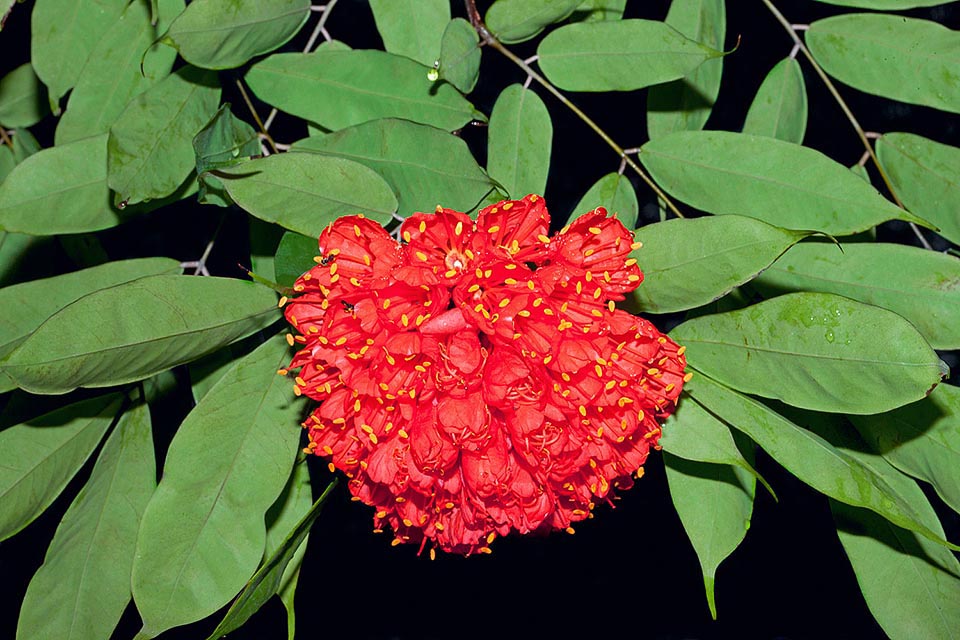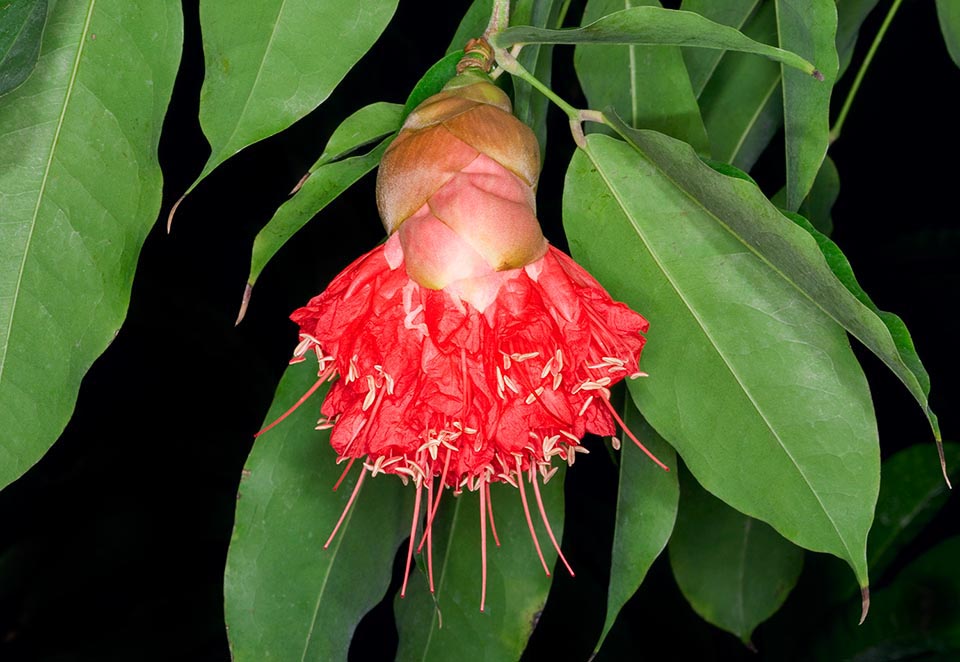Family : Fabaceae

Text © Pietro Puccio

English translation by Mario Beltramini
This plant is native to Colombia, Ecuador, Peru and Venezuela, where it grows in the humid forests at low altitudes.
The genus is honoured to the Irish botanist Patrick Browne (1720-1790); the name of the species is the one utilized by the natives of Colombia.
Common names: árbol de la cruz, arizá, palo de cruz (Spanish).
The Brownea ariza Benth. (1845) is a medium-sized tree, 9-12 m tall; with a greyish trunk of 30-40 cm of diameter and with long and hanging branches which tend to touch the soil. The leaves are alternate, paripinnate, up to about 60 cm long, of dark green colour, formed by 6-12 pairs of oblong-lanceolate leaflets with sharp apex; the young leaves are grouped, hanging, flabby, of an initially pink colour.

Native to Colombia, Ecuador, Peru and Venezuela, Brownea ariza ia a 9-12 m tree, with long and drooping branches tending to touch the soil © Giuseppe Mazza
Much similar species to the Brownea grandiceps from which it differs for some particulars and for the minor size of the inflorescence and for this reason less cultivated for ornamental purposes; it may be cultivated in the tropical and the marginally tropical climate zones, where it can resist to exceptional, but for a very short time, temperatures close to the 0 °C.

Opening inflorescence enclosed by bracts. The size is more contained than the showy ones of Brownea grandiceps hence this species is less present in the tropical gardens. However they are splendid plants and both show medicinal virtues, especially for the bark containing a powerful haemostatic © Giuseppe Mazza
The wood, very hard and resistant to the attacks of the termites, is utilized in the buildings and in the handicrafts. Parts of the plant are variously utilized in the traditional medicine, in particular the bark which contains a powerful haemostatic.
Synonyms: Brownea princeps Linden (1855); Hermesias ariza Kuntze (1891).
→ To appreciate the biodiversity within the family of FABACEAE please click here.
